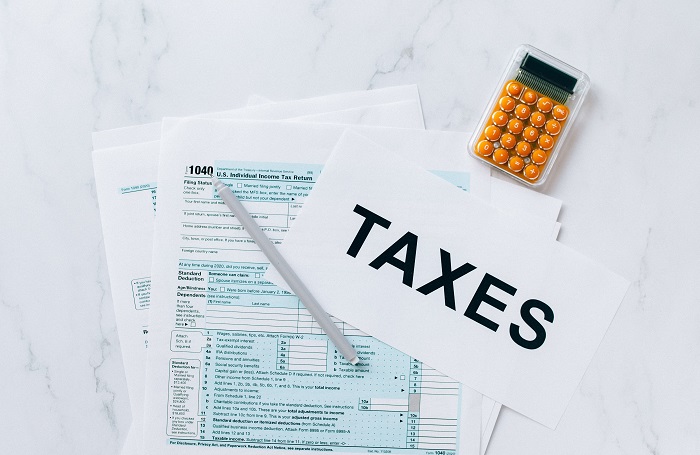
The vast majority of people around the globe get paid monthly. It implies that most will get a piece of paper with your pay data (and the deductions) for a month.
Unfortunately, as many of you may know, reading your pay stub can be challenging. Instead of interpreting the number that appears on their balance, many people gaze at it.
The information on the pay stub, on the other hand, is quite helpful. Any employee who understands its business language will benefit. Continue reading to learn the Top 8 Best Helpful Tips for Reading a Pay Stub Correctly.
Related Post: How To Manage Your Cash Flow In Your Small Business
How to read a pay stub
1. Check the top of your pay stub.
Basic information, such as your employer’s name and address, and the date your paycheck was issued, may be found at the top of your paycheck stub. You might also be able to learn more about the firm that handles your company’s payroll.
- Your paycheck stub will most likely have the check number at the top. You may use this to monitor revenue sources and quantities in your financial records.
- It is most likely the payroll company’s responsibility if something goes wrong with your paycheck. If you suspect an issue, contact human resources.
2. Locate the “Gross Pay” section.
Before any withholdings, your gross pay is the whole amount you earned. You can calculate The gross salary over a pay period, a set period.
- Taxes and other withholdings will not appear in your gross pay.
- Depending on your employment, a pay period might be any duration. Weekly, biweekly, and monthly pay intervals are typical. Other pay periods are conceivable but less typical.
3. Find your “Net Pay.”
Find the amount adjacent to the section labeled net pay to figure out how much of your earnings you get to keep.
- Net pay is a fraction of your earnings that you will get after there has been a deduction of any withholdings or taxes.
4. Locate the “Federal Tax Amount.”
This section will show you the entire amount of taxes deducted from your salary by the federal government. Depending on how many exemptions you claimed on your W-4 tax form, this amount will change.
- By completing a new W-4 form, you can adjust the number of exemptions at any time.
- Request a modification to your W-4 form or advice on doing so from your human resources contact.
- You can claim exemptions for yourself or others or none at all.
5. Locate the “State Tax” section.
The state tax section is frequently near the federal tax section. This state tax listing will show your tax payment to the state in which you live.
- State taxes differ from one state to the next.
- All states will not collect a state’s income tax.
- State taxes go toward public programs like education and health care.
6. Look for the “Social Security” section.
The federal government imposes the contribution to the social security system. When you reach retirement age, you will be eligible to tap into the Social Security system’s coffers and get a monthly payout. [6]
- Contributing to social security will aid in your retirement planning.
- You will pay 6.2 percent of your earnings into social security.
- In addition, your employer will contribute 6.2 percent of your earnings to social security contributions.
7. Look for the “Medicare” section.
Once you are eligible for Social Security, Medicare is a program that can assist you with medical payments and bills. Both you and your employer are required to pay into Medicare. [7]
- 1.45% of your gross income is Medicare payments, and your employer is also obligated to contribute 1.45% of your gross pay.
- You could also see that your Medicare is in a separate item named FICA. There is a combination of Medicare and Social Security in FICA.
8. Cross-check the “Year to Date.”
Year-to-date is a valuable column on your pay stub that may show you how much you have made and how much has gone to taxes or withholdings up to the present date of that pay stub.
- Keep up-to-date and accurate financial records of your earnings by using the year-to-date section of your pay stub.
Related Post: How To Improve Your Business Credit Score
Extra tips to watch out for when reading a pay stub
Each pay stub will be a one-of-a-kind piece of artwork. There may be additional items on your pay stub that you should search for, in addition to the more frequent items.
1. Deductions for health insurance.
Your employer may deduct money from your paycheck to cover the cost of your insurance coverage. If this is the case, you can track how much insurance you have paid and when you paid it.
2. Plan for your retirement.
If your business provides a retirement plan, they may automatically remove money from your paycheck and put it into your account.
It is a terrific method to save money for retirement, and if your paycheck stub includes this item, you can simply keep track of your contributions. The type of plan you use, such as a 401(k), 403(b), profit-sharing, or IRA, may be listed on your project.
3. Time off.
Some companies will record the amount of time off you have taken or will take. While not directly connected to wages, this item might help estimate how you will miss many hours of income if you take time off.
4. Additional information
Employers will include crucial information on the paycheck stub, such as changes to pay rules. These will keep you informed of any forthcoming changes that may impact your net earnings.
5. Find out what some of the most often-used acronyms signify.
To reduce space on your paycheck stub, your employer or the payroll provider they hired may utilize abbreviations. Understanding these abbreviations will assist you in making sense of the data given.
- Year-to-date − YTD
- Federal Tax or Federal Tax Withheld − (T or FWT)
- State Tax or Withheld State Tax − (ST or SWT)
- Social Security or Social Security Tax Withheld − (SS or SSWT)
- Medicare Withheld Tax − (MWT or Med)
Conclusion
It would be best if you had a much better understanding of the many components that comprise your pay stub by now. It may feel like stress to read your pay stub.
As some have pointed out, whether you bother to complete it or not, you are presumably getting paid the same amount. Workers should, however, be aware of where their hard-earned money they spent.
Notify someone if you believe there is an error on your pay stub. Do not allow a lack of understanding to hurt your balance!
It is legal to produce your pay stubs, and a paystub generator may help you do it quickly. On the other hand, fake pay stubs are unlawful when used to apply for loans and other things.
Unlike any other online paystub generator, a paystub generator is simple to use and takes less than 2 minutes to finish. To utilize a paystub generator, you only need to provide your company name and salary details.











